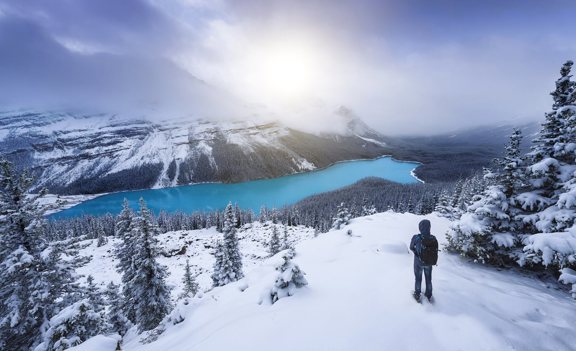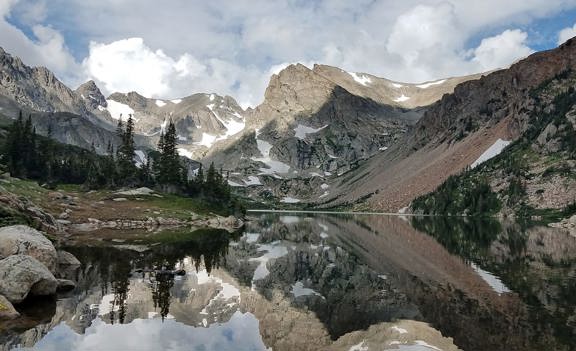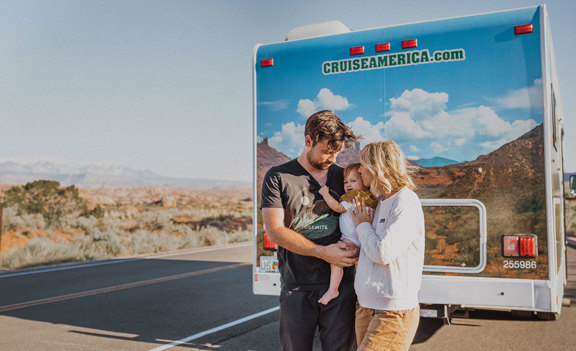How to Keep a Camper Warm in the Winter Months
ShareHave you ever dreamt of camping in the middle of a snow-blanketed forest but hesitated because you didn’t know how to keep a camper warm in the winter? Hold that thought.
RV camping is commonly associated with summer, but winter road trips are equally spectacular. From magnificent wildlife sightings to breathtaking scenery, winter RV trips bring a range of benefits. You’ll have opportunities to try unique winter sports like snowshoeing and cross-country skiing. Plus, popular attractions like national parks tend to be significantly less crowded in the winter.
While winter RVing has many advantages, it does have some inherent challenges. Fortunately, with a bit of forethought and planning, you can have a wonderful winter camping experience.
How to Keep Your RV Warm in the Winter
 Photo Credit: Instagram User @jihye.lee.2379
Photo Credit: Instagram User @jihye.lee.2379To keep you and your crew comfortable, it’s crucial to know how to keep a camper warm in the winter. These tips will make cold-weather RVing more enjoyable and help your rig function properly.
Before the trip
Smart winter RVers know that preparation is key. When you’re learning how to keep your RV warm in winter, there are several things you can do before you hit the road. Let’s walk through three winter prep tips below. Purchase an RV skirt. This humble contraption goes a long way in terms of heating an RV in winter. There are several types and price points, but all RV skirts work the same way; they wrap around the bottom of your RV, providing an insulation layer that protects your batteries, plumbing, and undercarriage.
Wrap pipes in insulation tape. Wondering how to insulate an RV for winter use? Wrap pipes and insulation tape are your winter RV essentials. These thick wraps are typically made of foil and foam and prevent heat loss through the pipes.
Properly insulate the windows. According to the Department of Energy, heat loss and gain through windows accounts for 25-30% of energy usage. So don’t neglect the windows when considering how to insulate an RV for winter use.
Ensure your camper’s windows and doors are sealed by going over all seams with RV caulk. You can also use thermal-backed curtains, foil insulation sheets or boards, or even solar blankets inside the RV’s windows to further insulate.
During the trip
Winter RV road trips bring epic adventure opportunities. Making sure your RV is winter ready is the first step for a seamless trip. Implement these solutions for heating an RV in winter when you get to your destination. Be heater savvy. If you’re camping with electricity hookups, you can run your RV’s native furnace. However, if you’re somewhere without a hookup, you have to think outside the electrical box. Use a warm water bladder or microwavable heating pad in lieu!
Let the water run. If you’re camping in sub-zero temperatures but still need access to your RV’s plumbing, leave a faucet dripping overnight. This is one simple way to prevent frozen pipes. The American Red Cross explains that constantly-flowing water is less likely to freeze. An alternative is heat tape, which can be plugged in and wrapped around hoses and pipes to warm them.
After the trip
So you’ve mastered how to keep a camper warm in the winter on the road. Winter trips, here you come! Once you make it home, be sure to follow the tips below. If you’re unfamiliar with the term “winterize,” it’s an important step in preparing an RV’s plumbing for cold weather. When you’re not concerned with how to stay warm in your RV in winter but will be storing it for an extended period, winterizing means completely draining water from all hoses, water lines, and tanks, as well as disabling the plumbing altogether. Note that winterizing is generally only necessary if the temperatures actually dip below freezing.
Dos and Don'ts of RVing in the Winter

These do’s and don’ts will help you keep your RV in tip-top shape, no matter how low temperatures go.
- DO invest in an RV skirt. This protects your batteries and plumbing and can be used again and again.
- DO properly insulate all pipes, windows, and doors.
- DON’T let moisture accumulate inside. Cold, wet weather combined with constantly running heaters creates humidity, which can lead to mold. Properly ventilate your RV and use a dehumidifier if necessary.
- DON’T skip winterizing your RV when it will be stored for long periods.
Winter RV Supplies to Bring for Heating an RV in Winter
 Photo Credit: Instagram User @matecasar
Photo Credit: Instagram User @matecasarIn addition to these tips and tricks, some extra gear can go a long way as far as how to insulate an RV for winter use.
- An ice scraper and snow shovel: You may need these to de-ice your windshield or dig your RV out of the snow.
- Thermal blankets: These can serve as extra insulation, plus they warm you.
- Vent insulator pillows: These foil-covered cushions go into vents to reduce heat loss.
- Space heaters.
- Extra propane.
- A few days’ worth of emergency food supplies and water. DoItYourselfRV has some great suggestions on specific foods to store.
Winter RV Rentals from Cruise America
Now that you know how to keep a camper warm in the winter, you’re ready to hit the road! Cruise America has a wide range of RVs well-suited to winter camping, and we’d love to be along for the ride—literally.Contact Cruise America today to browse our available winter RV rentals. We have many convenient locations, so no matter what your definition of “winter wonderland” is, we can get you there.





